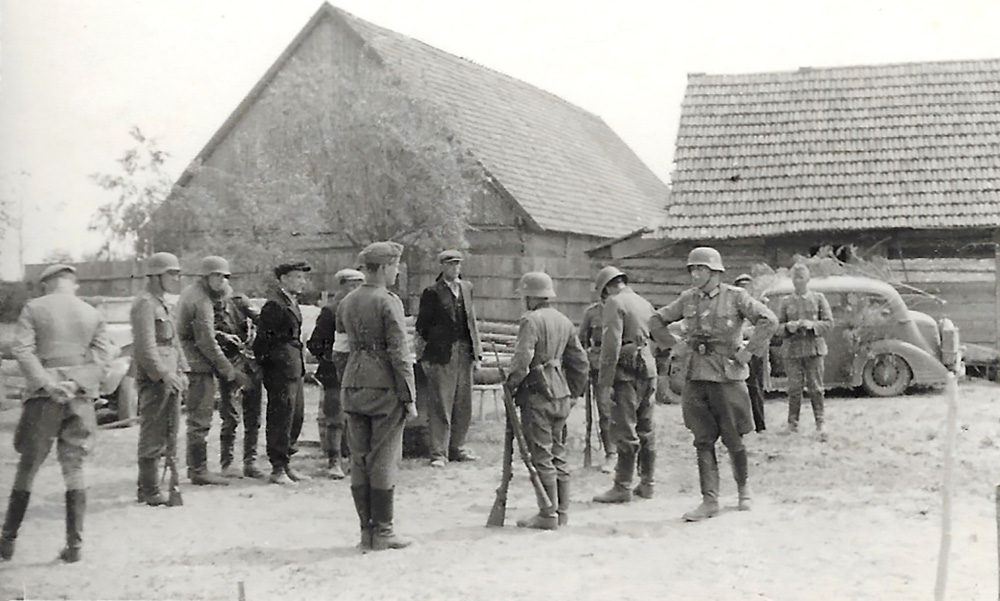Silvia Malagrino
I had a few nights of insomnia. I don’t know what compelled me to browse eBay and search for photographs taken by German soldiers during WWII. I had seen them before. I needed snapshots for a film I was working on that took place during the war. On eBay you can find thousands of snapshots taken by the soldiers. Soldiers posing in front of dilapidated buildings, studio portraits, killed in action bodies, fields with crosses, German families and so on – a vast spectrum of snapshots. I felt I was traveling through a forbidden landscape. I was looking at the disaster through the eyes of the perpetrator. One of the photographs I found was that of three men before being executed. I bought the photograph. On its back there is hand writing in German I couldn’t understand. I asked a friend of mine to decipher it. The inscription says something like “Russian Officials (or Functionaries) before their execution.” The instant of the prisoners’ death was left to imagine; the after photograph is absent. Why did the photographer chose this moment? My own attachment to the photograph haunts me. I am the observer of what is about to come – the implacable moment of death. Maybe the soldiers exchanged some words. Maybe the prisoners defended themselves, or insulted the soldiers or said nothing. Narration falls away. What I know from the photograph is that there are Nazi soldiers and prisoners standing in a field at the back of some houses or a barn minutes before an execution. A soldier is tying up one of the prisoners. An officer seems determined but he does not look at them, another officer seems inpatient. A soldier facing the prisoners cannot look at the prisoners either; one could say he feels the burden of the task ahead. There are others waiting. I notice some trees; they are blurred, but there are leaves. The uniforms tell me it was not winter; perhaps it was autumn, or spring, or the beginning of winter.


